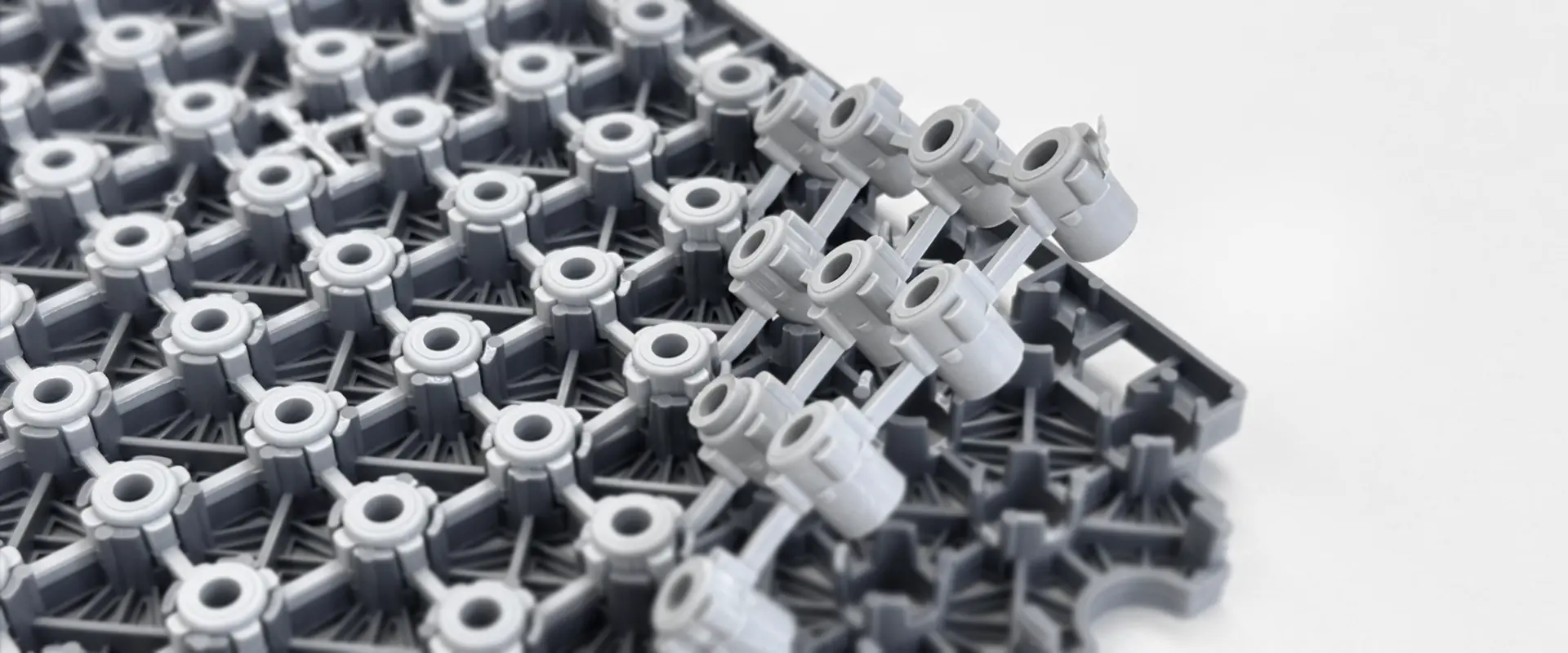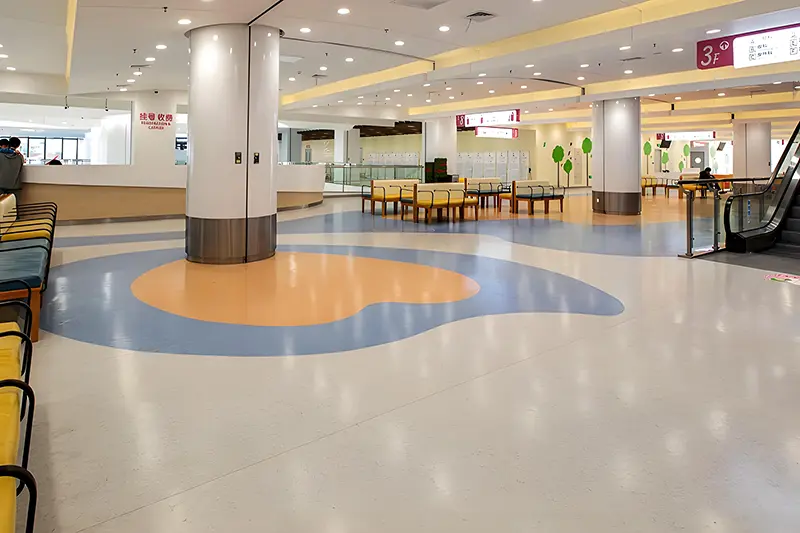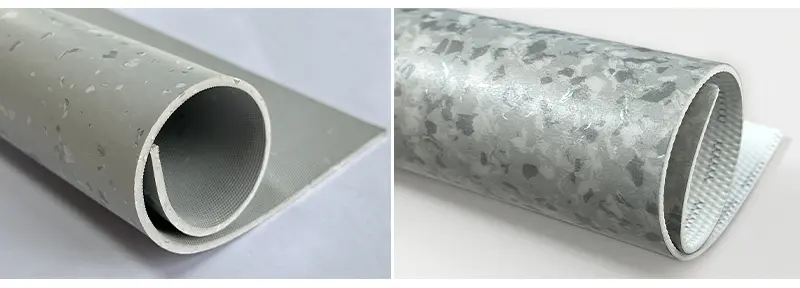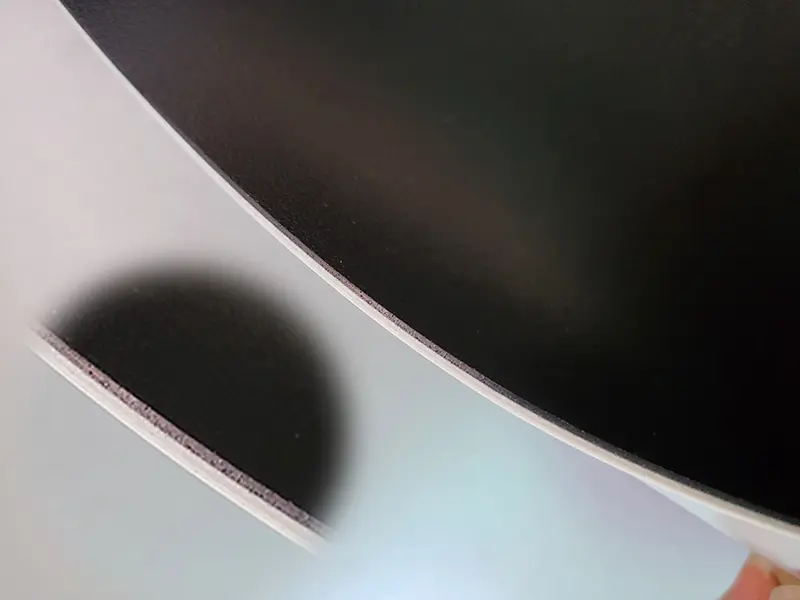Stable commitment to every leap, customized every flat
Blog


Stable commitment to every leap, customized every flat
Blog

Commercial vinyl (PVC) flooring has become a top choice for businesses worldwide—from retail stores and offices to hospitals and schools—thanks to its unbeatable blend of durability, versatility, and cost-effectiveness. Unlike residential vinyl, commercial-grade options are engineered to withstand high foot traffic, heavy equipment, and frequent cleaning, making them a long-term investment for any commercial space. However, with countless types, thicknesses, and features available, selecting the right commercial vinyl flooring can be overwhelming.
This guide breaks down the entire buying process, from defining your space’s unique needs to evaluating key performance metrics and avoiding common pitfalls. Whether you’re outfitting a busy retail corridor, a sterile hospital room, or a cozy office lobby, this guide will help you make an informed decision that aligns with your budget, functionality, and aesthetic goals.

Before exploring product options, start by answering these critical questions—they will narrow down your choices and ensure the flooring matches your space’s demands:
Different spaces have non-negotiable requirements. For example:
Retail Stores: Prioritize scratch resistance (from shopping carts, high heels) and aesthetic appeal (to match brand identity).
Hospitals/Clinics: Focus on antibacterial properties, seamless installation (to prevent bacteria growth), and chemical resistance (for frequent disinfection).
Offices: Balance comfort (for staff standing long hours) and durability (for rolling office chairs).
Schools/Kindergartens: Emphasize slip resistance (for active kids), impact absorption (to reduce fall injuries), and easy cleaning (for spills and scuffs).
Gyms/Fitness Centers: Need moisture resistance (from sweat) and high traction (for workouts).
Commercial vinyl is rated for traffic intensity—choosing the wrong grade will lead to premature wear:
Low Traffic: Administrative offices, storage rooms, small meeting rooms. Look for basic commercial grades (e.g., ISO 10581 Class 3).
Medium Traffic: Retail fitting rooms, school classrooms, office lobbies. Opt for mid-grade options (ISO 10581 Class 3-4).
High Traffic: Retail corridors, hospital hallways, airport waiting areas. Invest in high-performance grades (ISO 10581 Class 4-5).
The prices of heterogeneous and homogeneous floors are different because their structures and performances are different. At the same time, the detailed price is determined according to the actual area you need. As a manufacturer, we can develop different plans according to your requirements, whether you want a low price or high standard and high quality.
All commercial vinyl falls into two categories: homogeneous and heterogeneous. Their structures differ drastically, impacting performance, durability, and ideal use cases.

Structure: A single, uniform layer where color, texture, and performance properties run throughout the material (no separate “wear layer” or “decorative layer”). Made by mixing PVC resin, colorants, stabilizers, and additives into a single compound.
Key Advantages:
Superior Durability: Wear resistance is consistent across the entire thickness—even if scratched, the color/texture remains unchanged.
Seamless Installation: Can be hot-welded to create a monolithic surface with no gaps (critical for hygiene-focused spaces like hospitals).
Chemical Resistance: Non-porous and resistant to harsh cleaners (bleach, disinfectants), making it ideal for labs or healthcare settings.
Key Disadvantages:
Limited aesthetic options (mostly solid colors or subtle speckles—no detailed wood/stone mimics).
Stiffer underfoot (less comfort for standing).
Best For: High-traffic, high-hygiene spaces (hospital corridors, lab floors, retail checkout areas).
Structure: Multi-layered design, typically with 4 components:
Wear Layer: Top layer (0.15-0.5mm) of reinforced PVC or PU/PUR coating for scratch resistance.
Decorative Layer: Thin PVC film (0.05-0.1mm) with high-resolution prints (wood, stone, geometric patterns).
Core Layer: Dense PVC (2.0-4.0mm) for structural stability; may include fiberglass to prevent warping.
Backing Layer: Optional EVA foam or PVC for cushioning and sound absorption.
Key Advantages:
Versatile Aesthetics: Mimics natural materials (oak, marble, tile) with realistic detail—perfect for offices or retail lobbies.
Comfort: EVA backing adds cushion, reducing foot fatigue (great for reception areas or classrooms).
Cost-Effective: More affordable than homogeneous vinyl for mid-traffic spaces.
Key Disadvantages:
Wear layer degradation: If the top wear layer is worn through, the decorative layer becomes exposed (requires replacement).
Harder to clean seamlessly (tiles may have grout-like seams that trap dirt).
Best For: Medium-traffic, design-focused spaces (office workstations, school classrooms, retail fitting rooms).
PVC flooring with a foam layer is often used in dance studios for commercial purposes. If you have other requirements, please contact us.
Quick Comparison: Homogeneous vs. Heterogeneous
| Feature | Homogeneous Vinyl | Heterogeneous Vinyl |
| Durability | Excellent (12-15 years) | Good (8-10 years) |
| Aesthetic Options | Limited | Wide (wood/stone mimics) |
| Comfort | Stiff | Cushioned (with EVA) |
| Seamless Installation | Yes | Possible (sheets only) |
| Ideal Traffic | High | Medium-Low |
Not all commercial vinyl is created equal—focus on these 5 metrics to ensure it meets your space’s needs:
This measures how well the flooring resists scratches and scuffs. Look for ratings based on ISO 10581 (the global standard for vinyl flooring):
Class 3: 2,000-4,000 revolutions (low-medium traffic: offices, small retail).
Class 4: 4,000-6,000 revolutions (medium-high traffic: school corridors, retail floors).
Class 5: 6,000+ revolutions (high traffic: hospital hallways, airport lobbies).
Tip: For spaces with rolling equipment (shopping carts, office chairs), choose Class 4+ to avoid indentations.
Slip falls are a major liability in commercial spaces. Check the coefficient of friction (COF)—a higher number means better traction:
Dry COF: Aim for ≥0.6 (EN 14411 standard) for all commercial spaces.
Wet COF: Critical for kitchens, bathrooms, or gyms—look for ≥0.5 (EN 14411 R9 or R10).
Tip: Avoid highly polished surfaces in wet areas; opt for surface pattern for extra grip.
Commercial spaces face spills (coffee, ink, food) and harsh cleaners. Ensure the flooring:
Resists common stains (ask suppliers for stain test reports—look for no discoloration after 24 hours of exposure to coffee, wine, or ink).
Withstands your space’s cleaners: Hospitals need resistance to bleach/hydrogen peroxide; restaurants need oil/grease resistance.
Poor indoor air quality harms staff and customers. Choose vinyl certified by:
GREENGUARD Gold: Limits VOCs to ≤0.124mg/m³ (safe for schools, offices, and healthcare settings).
EU Ecolabel: Ensures low emissions and eco-friendly production.
Avoid: Cheap vinyl with strong chemical odors—these often emit high VOCs and cause headaches or allergies.
Important for spaces with standing staff (retail, reception) or active users (schools, gyms). Look for EN 14808 impact absorption ratings:
20-30% absorption: Ideal for offices or retail (reduces foot fatigue).
30%+ absorption: Necessary for gyms or schools (reduces fall injuries).
Note: Heterogeneous vinyl with EVA backing typically has better impact absorption than homogeneous vinyl.
Commercial vinyl thickness ranges from 1.5mm to 5.0mm—thicker does not always mean better. Match thickness to traffic:
1.5-2.0mm: Low traffic (storage rooms, small offices).
2.0-3.0mm: Medium traffic (classrooms, retail fitting rooms).
3.0-5.0mm: High traffic vinyl (hospital corridors, gym floors) or spaces with heavy equipment.
Key: For heterogeneous vinyl, prioritize the wear layer thickness (0.3mm+ for high traffic) over total thickness—this is what protects the decorative layer.

The right installation ensures durability and performance:
Glue-Down: Best for high-traffic spaces (hospitals, retail). Adheres directly to the subfloor (concrete or wood) for stability. Requires professional installation and 24-48 hours of curing time.
Click-Lock: Ideal for offices or temporary spaces. Flooring snaps together without glue—faster to install (40% quicker than glue-down) and easier to replace. Not recommended for heavy rolling equipment (may shift over time).
Loose-Lay: Rare for commercial use. Flooring lies loose on the subfloor (held down by weight) —only suitable for low-traffic, non-moving furniture areas.
Critical Pre-Installation Step: Prepare the subfloor! It must be:
Flat: ≤2mm deviation per 2m (use a level tool to check).
Dry: Concrete subfloors need ≤3% moisture (test with a moisture meter); wood subfloors need ≤12% moisture.
Clean: Free of dust, grease, or old adhesive.
Even experienced buyers make these errors—here’s how to skip them:
Cheap vinyl often uses low-quality PVC or thin wear layers, leading to replacement in 3 years.
Invest in mid-range vinyl it costs more upfront but saves money on maintenance and replacement.
A poorly prepared subfloor causes warping, cracking, or lifting. Budget for subfloor repairs (e.g., filling cracks, leveling concrete)—this can add 10-20% to your project cost but is critical for longevity.
Some vinyl requires frequent waxing or special cleaners—this adds to long-term costs. Choose “no-wax” vinyl with a PU/PUR wear layer (only needs mopping with neutral detergent) for busy spaces.
Always request 30cm×30cm samples and test them in your space:
Place samples in different light (natural and artificial) to check color accuracy.
Scratch the surface with a key to test wear resistance.
Spill your space’s common liquids (coffee, bleach) to check stain resistance.
A good supplier ensures you get high-quality vinyl and reliable support. Look for these traits:
Industry Experience: 5+ years in commercial vinyl (avoid new suppliers with no track record).
Warranty: Offers a 5+ year commercial warranty (covers wear, fading, and manufacturing defects).
Support: Provides installation guides, maintenance tips, and responsive customer service (e.g., replacement parts for damaged tiles).
Example: Suppliers like Shengbang pvc flooringoffer end-to-end support—from sample testing to installation training—making them a trusted choice for global businesses.
Leave Your Message
Message us for free samples and quotes!